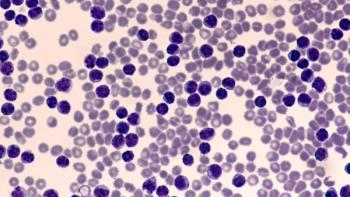
TAR-200 Intravesical System Demonstrates Sustained Bladder Exposure in BCG-Unresponsive NMIBC
Felix Guerrero-Ramos, MD, outlines molecular and pharmacologic findings from SunRISe-1, including the high prevalence of TP53 alterations and the extended drug exposure achieved with the TAR-200 intravesical delivery system.
At the 2025 European Society of Medical Oncology (ESMO Congress, investigators shared new analyses from the phase 2b SunRISe-1 trial evaluating TAR-200, an intravesical gemcitabine-releasing system, in patients with Bacillus Calmette-Guérin immunotherapy (BCG)-unresponsive non-muscle-invasive bladder cancer (NMIBC).
In this interview with Pharmacy Times, Felix Guerrero-Ramos, MD, discusses genomic findings from the study, including the prevalence of TP53 alterations, and highlights how TAR-200’s sustained drug exposure could offer pharmacologic advantages over conventional intravesical gemcitabine.
Q: Can you briefly summarize the latest SunRISe-1 findings on the relationship between molecular biomarkers and clinical response to TAR-200 in patients with BCG-unresponsive NMIBC?
Felix Guerrero-Ramos, MD: Well, we’ve analyzed several genomic alterations in our patients with the SunRISe-1 trial. In cohort 2, which includes patients with BCG-unresponsive [carcinoma in situ] CIS receiving TAR-200 alone intravesically, with no systemic therapy, we found that around 80% to 85% of the patients harbor some kind of alteration in their DNA.
The most frequent alteration, found in about 50% of patients, is TP53. However, we have not found any significant association between these alterations and clinical outcomes such as progression or recurrence—probably due to the small sample size. I hope that in the future, with larger samples, we can demonstrate some differences in predicting response.
Q: What specific molecular signatures or pathways were most strongly associated with response to TAR-200, and how might these findings guide future patient selection or stratification?
Guerrero-Ramos: Yes. Okay, so let’s not take into account systemic therapies, as they are not the same way of delivering. Let’s focus on intravesical therapies. The classical instillation of gemcitabine provides 2 g (2000 mg), which is held in the patient’s bladder for around 2 hours. TAR-200 contains 225 mg, which is sustainedly released over 3 weeks.
The first advantage is that we have continuous contact of the mucosa with the drug and its active metabolite. We have seen this in the PENELOPE study, which was brilliantly presented by Dr. Benjamin Pradere at EAU 2025 in Madrid. We saw differences between instilling standard gemcitabine versus TAR-200 in pigs. With current gemcitabine, the mucosal exposure to the drug is very short—just hours—whereas with TAR-200, exposure lasts for days. Not only that, but the exposure of conventional gemcitabine is limited to the mucosal layer, while with TAR-200, we are also exposing the lamina propria and muscle layer.
Newsletter
Stay informed on drug updates, treatment guidelines, and pharmacy practice trends—subscribe to Pharmacy Times for weekly clinical insights.




















































































































































































































